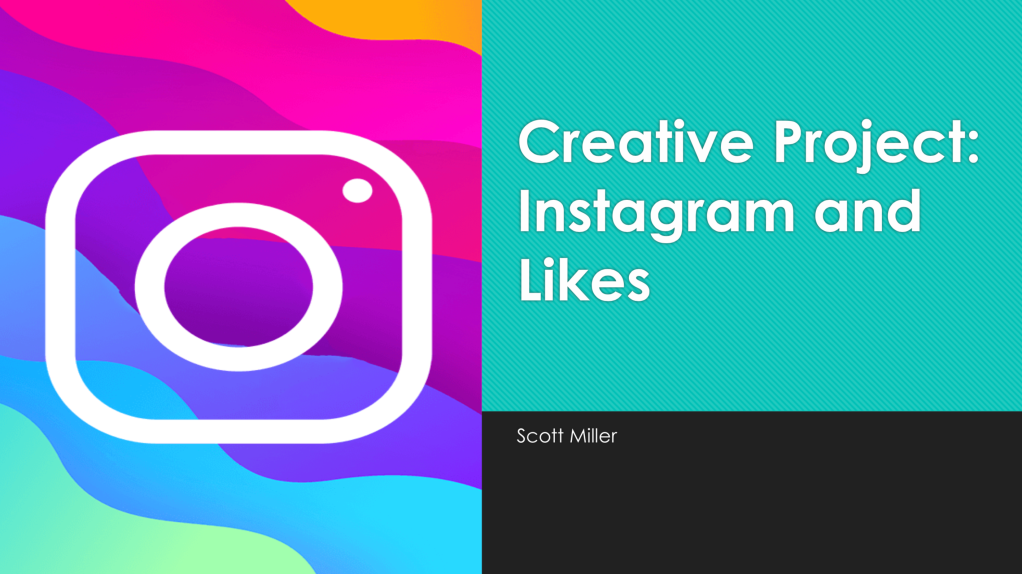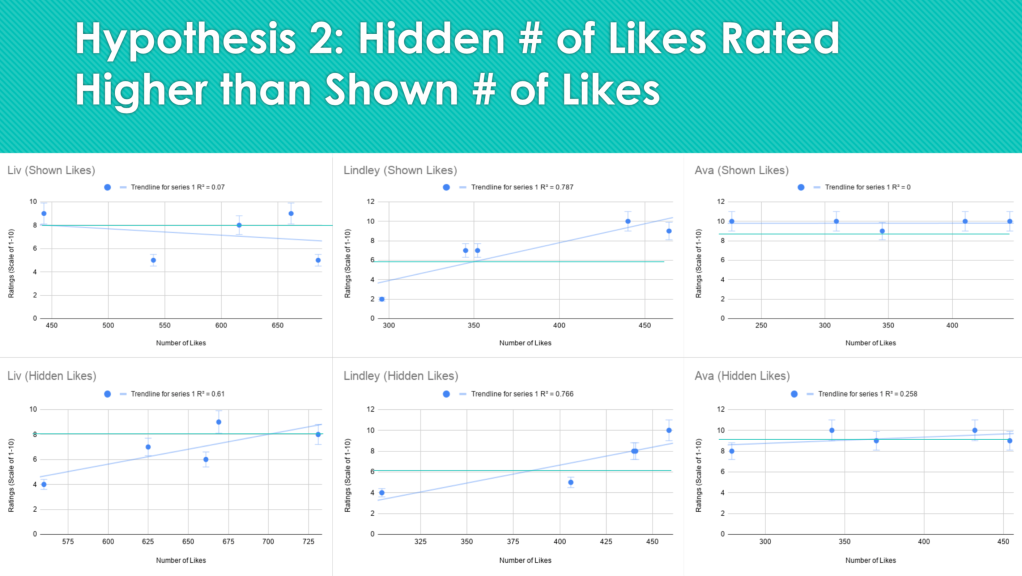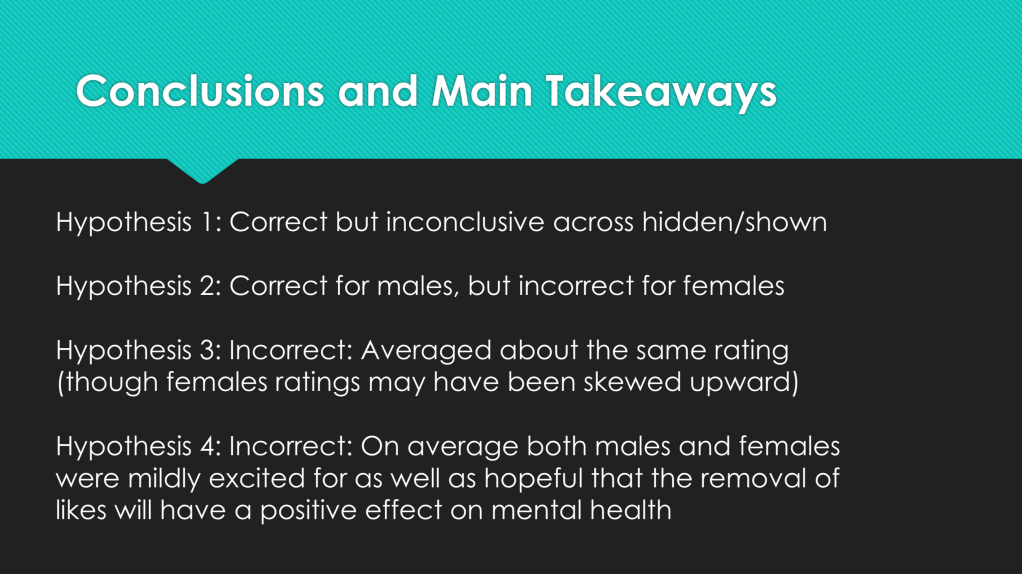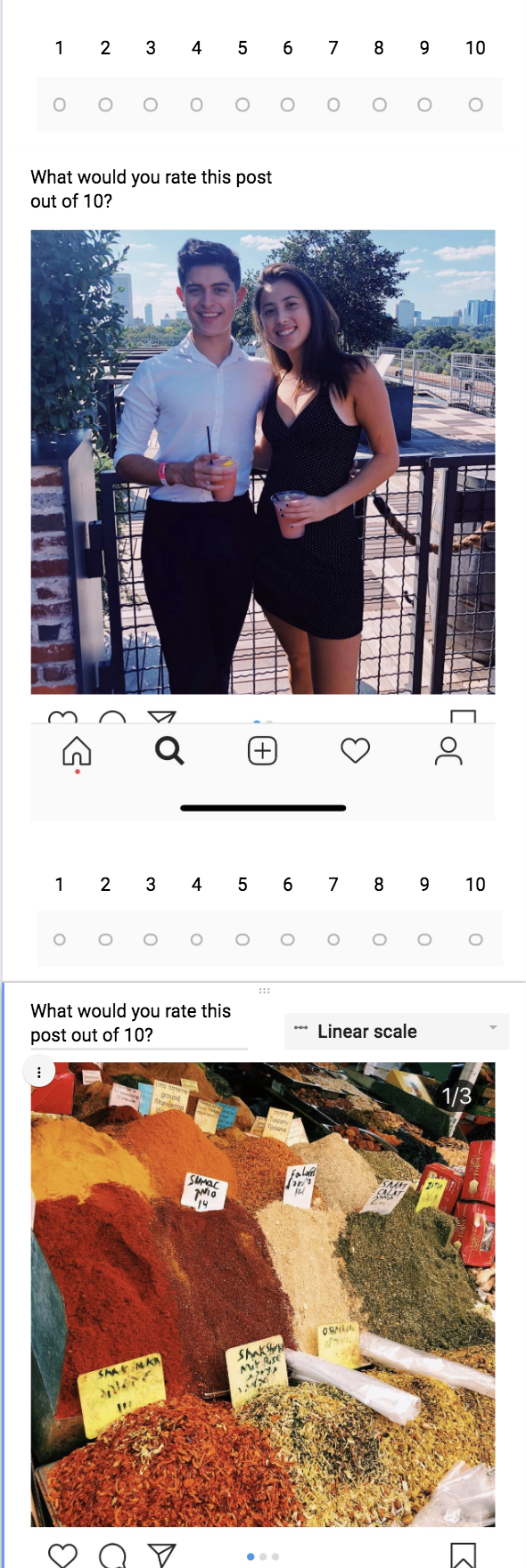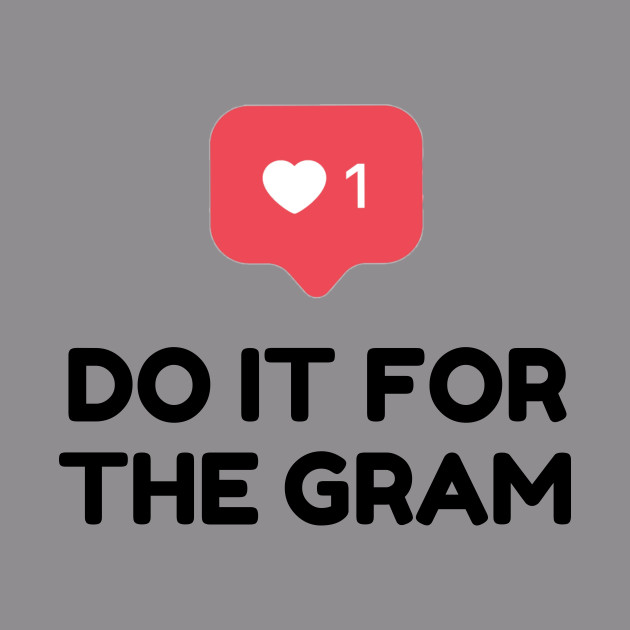
“I need to wait until primetime to post this picture so that the most people possible see it.”
“Please go like my last post so I can get to 200 likes.”
“Let me get a picture for the ‘Gram!”
“Move the cup so the logo is facing the camera.”
“Do you think I look good in this or does it look weird?”
“How can you not have an Insta!?”
Instagram, the site of half-truths, approval seeking, and doing anything just to fit in and be popular. Instagram is perhaps the most harmful social media platform, and digital media space in general. Constantly we are forced to evaluate ourselves based on other people’s accounts, how many likes we receive on our pictures, how we think other people will want to see us, according to the lives of celebrities and influencers, and by enhancing our own images to find our “faults” and feel worse about ourselves and our own bodies. While it may seem as though this fascination with social media and constant self-assessment is a niche issue that is easily avoidable, in reality this is a problem that stems not only from the fact that influencers and celebrities actively benefit and profit from having “good” accounts which incentivizes their followers, but more importantly from the fact that social media anxiety disorder and addiction are very real and prevalent issues.
An addiction to social media is a strong indication that one may have social media anxiety disorder, which “is a mental health condition that is similar to social anxiety disorder” (Fader). Some common symptoms of social media anxiety disorder and addiction are “interrupting conversations with others to check your social media accounts, experiencing withdrawal symptoms when you are not able to access social media, spending over six hours per day on social networking sites like Facebook, Twitter, or Instagram, severe nervousness or anxiety when you are not able to check your notifications, negative impacts in your personal or professional life due to social media usage” and many more (Fader). According to experts’ research on the topic, “almost 20% of people with social media accounts cannot go more than three hours without checking them” (Fader).


Think about this for a second: how often do you find yourself blown away or bothered by the amount of time that your friend, someone you know, or even you yourself spend on Instagram or other social media platforms? It is almost a zombie-like state, where one is unable to lift one’s eyes from the screen, fading the real world out and disappearing into the phone screen, scrolling almost subconsciously with great fervor. This is another troubling aspect of Instagram and social media, an addiction so strong that it pulls one away from reality, and makes them incapable of having simple interactions without being distracted and glancing at one’s phone whenever the conversation gets tough. Not only can this addiction detract from daily interactions with friends and family and limit users’ abilities to develop deep, meaningful relationships with those around them, but it can also lead to negative health effects such as body-image related issues.
In fact, “internet exposure was significantly correlated distinctively with internalization, body surveillance, and drive for thinness. Young adults who are heavy users of the Internet were also found to exhibit Internet addiction symptoms. They showed symptoms of body image avoidance and disordered eating” (Ashraf Sadat, et al., 9). While issues of body image were found to be more prevalent amongst female users than male users, when respondents viewed images of “ideal body types” of women and men, both female and male participants reported “lower happiness, lower appearance satisfaction, lower body satisfaction, and higher level of depressive feelings (Ashraf Sadat, et al.,10). The findings from this study were incredibly disheartening, yet sadly unsurprising as I have seen many users, including the majority of my closest friends zoom in on pictures, ask if they “look okay” in their pictures, and limit the amount that they eat especially when they are planning on going out. I do not see this as a coincidence, as nearly 100% of the time that I go out with both male and female friends, they insist on taking seemingly a million staged photos.
Beyond the already concerning effects Instagram has on body image and eating disorders, Instagram and social media are shown to bring about a large number of other mental health related disorders. These disorders including anxiety and depression are, rather unsurprisingly, more prevalent in teens and young adults. One of the most shocking findings I came across showed that anxiety and depression had a direct correlation to the emergence of social media as “the greatest spike in symptoms occurred in 2011, around the same time social media bursts onto the scene” (Shamard). This study also showed that anxiety and depression has increased most prominently “in those born in 1995 or later” and that there has been a “substantial increase in major depression or suicidal thoughts, psychological distress, and more attempted suicides after 2010, versus the mid-2000s, and that increase was by far the largest in adolescents and young adults” (Shamard). These shocking statistics are completely disheartening and of incredible importance to me, as my generation is not only at risk of feeling inadequate, but literally dying because of our addictions to social media.
The issue of social comparison has long been examined from the days of Social Psychologist Leon Festinger. In fact, “Festinger’s theory of social comparison… showed the power of groups to generate conformity” (Ons, 3). This speaks directly to the idea of liking an image just because other people like it or because someone “popular” like a celebrity or influencer posted it. Festinger’s theory on the power of groups to generate conformity can be directly seen on Instagram as “teens are influenced to like photos, regardless of content, based on high numbers of likes” (Hurley). This is quite striking as it shows that people may be losing their senses of individuality and fundamental belief systems in the name of fitting in and being “liked,” perhaps even subconsciously.
This issue is not only important as it shows the importance of fitting in and portraying oneself in a specific manner online regardless of the objective truth, but it also points to glaring levels of insecurity and the need to be validated. This validation may in turn have negative consequences for young adults’ senses of self and mental health as described above, as users “selectively display the ideal images of their appearance to impress others and receive approval from friends and peers” (Ashraf Sadat, et. al, 13). Due to not only the fact that young adults post in an attempt to receive approval from other users, but also the fact that for teens between the ages of 13 and 18 “receiving a high number of likes on photos showed increased activity in the reward center of the brain,” there is an increased risk of depression and anxiety in those who receive lower like totals (Hurley). Social comparison on Instagram thus not only causes a lack of individuality in its users and creates an “ideal” profile by numerically ranking some users over others, (much like in the dystopian world seen in our class screening of Black Mirror’s “Nosedive”), but it can literally lower the self-esteem of young adults in particular to a point of depression or even suicide.

When people ask me how it is possible that I don’t have an Instagram, there is always a strong feeling of judgement on their part, that I am somehow weird or that something is wrong with me, but there is also a weaker feeling that inspires some hope in me; the feeling that they are somehow impressed with my “not giving in” to the powers of Instagram. While I don’t have anything against anyone who uses Instagram (otherwise I likely wouldn’t have any friends!), and surely often feel left out when my friends talk about posts they’ve seen or tag each other on funny content, I still have little desire to make an account. The largest deterring factors for me are not only my hatred of taking pictures, especially of myself, but more important than this is observing my friends’ addictions to the platform. As seen through the research included in this essay, there is great evidence showing the negative impacts that Instagram can have on its users. It would be quite remiss of me however to only highlight the negative aspects of Instagram and social media, without also offering possible solutions to these problems as well highlighting some of the benefits that the platform has to offer.
While Instagram seems to be an overwhelmingly negative place, I hope to offer some advice to users as to not feel doomed. In order to keep the application we know and love up and running while also safe for its users, some steps must be taken in order to protect vulnerable teens and young adults.
The techniques that should be employed to reduce issues of self-esteem and negative body image include “de-emphasizing the value of thinness or attractiveness and creating positive messaging around the importance of having skills and capabilities” to promote “inner beauty” (Ashraf Sadat, et. al, 14). Due to the competitive and comparative nature of Instagram, young adults are subliminally taught that the goal of posting images is to get as many likes as possible, and thus they must look as good as possible in each image that they post. Failure to do so would result in a fewer like total, which in turn may imply that they or the picture they posted did not “look good enough” to receive a like.
This is why it is important that we emphasize not only physical attractiveness, but also the unique characteristics about ourselves that make us fascinating individuals. It will also be interesting to see if Instagram’s upcoming policy of removing likes from images will have an impact on issues of self-esteem, but also what users choose to post as ideally hiding the likes from images will reduce users’ urge to “prove” their worth in likes. Hopefully this measure will act to encourage more unique and individualistic posts from users, and to show their interests and inner-beauty.
Despite their flaws, Instagram and social media also have the potential to connect people around the world in powerful and important ways. As described in Hurley’s piece on mental health in teens, “teens are hardwired for socialization, and social media makes socializing easy and immediate” (Hurley). Despite the potential issues associated with constant communication, attention, and lack of physical human interactions, for “teens who struggle with social skills, social anxiety… [they] might benefit from connecting with other teens through social media” (Hurley).

Not only does social media offer a landscape for socially anxious teens to communicate with friends and others free of potential physical ailment, but it is also especially beneficial for “teens in marginalized groups… [who] can find support and friendship” (Hurley). This is an incredibly special element of social media that many users fail to utilize or recognize: the fact that social media can act as a network of support for those who may need it the most. While it is especially important for those in marginalized communities to be able to gain the support and help that they need, these support groups can also be used to aid those experiencing mental health issues, and those who simply don’t feel they can express themselves freely by connecting them with people who are experiencing the same issues themselves as well as potentially medical professionals. If this already positive element of social media is utilized to its fullest potential, it can promote an open dialogue for those who experience social media related anxiety disorders and show others that they are not alone in their distaste for aspects of Instagram and social media.
Finally, in addition to utilizing Instagram in healthier and more constructive ways, one of the most important things we can do to mitigate the issues associated with Instagram and social media, is simply to put our phones down every once in a while, and fully immerse ourselves in life. We have all become obsessed and addicted to technology and social media in one form or another whether that be messaging, emailing, streaming shows, checking scores, following the news on our phones, anything. It seems that if we look away for even just a second, we are disconnected from reality and the rest of the world. While it may feel like this at times, our realities are not determined by the little glowing boxes in our pockets. Our realities are determined by the actions we take in real life, the face-to-face interactions and connections we make with others, and the places that we take the time to go out and experience for ourselves. While some say go outside and smell the roses, I leave you with this proposition: go outside, and don’t bring your phone with you.

Bibliography:
Abid, Ons, et al. “Deterministic Models for Opinion Formation Through Communication: A Survey.” El Sevier: Online Social Networks and Media, Higher Institute of Computer Science and Multimedia of Sfax, National School of Engineers of Sfax, Tunisia, 5 Apr. 2018, https://www-sciencedirect-com.proxy.library.emory.edu/science/article/pii/S246869641730085X
Fader, Sarah, et al. “Social Media Obsession and Anxiety.” Anxiety and Depression Association of America, ADAA, Nov. 2018, https://www.advantageengagement.com/content_detail.php?id_cr=98023
Ahadzadeh, Ashraf Sadat, et al. “Self-Schema and Self-Discrepancy Mediate the Influence of Instagram Usage on Body Image Satisfaction among Youth.” Computers in Human Behavior, vol. 68, 18 Nov. 2016, pp. 8–16., doi:10.1016/j.chb.2016.11.011. https://reader.elsevier.com/reader/sd/pii/S074756321630752X?token=4E6AF19BA12DB17C733FEFD8703F6A373574EAAA67A6AED629B85DFB8B05D42667451B7F0DDB6D1A24ED8866F2323FF0
Hurley, Katie. “Social Media and Teens: How Does Social Media Affect Mental Health?” Psycom.net – Mental Health Treatment Resource Since 1986, 7 Mar. 2019, https://www.psycom.net/social-media-teen-mental-health.
Charles, Shamard. “Social Media Linked to Rise in Mental Health Disorders in Teens, Survey Finds.” NBCNews.com, Journal of Abnormal Psychology, 15 Mar. 2019, https://www.nbcnews.com/health/mental-health/social-media-linked-rise-mental-health-disorders-teens-survey-finds-n982526.









